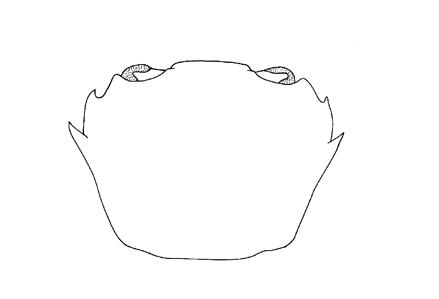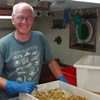General Description
Carapace hexagonal (posterolateral margin tapering), widest at junction of anterolateral and posterolateral borders; anterolateral border with 2 spines; eyestalk occupying about one-quarter of frontal border; front deflexed, straight, without median notch. First anterolateral spine after orbital tooth, acute and set back about one third way to second anterolateral spine; usually with brown fingers. Up to 3 cm wide.
Biology
This species is more common in deeper waters of Bass Strait and rarely reported from Port Phillip Bay. The abdomen in all crabs is small and tightly held against the underside of the body. Like all crustaceans the sexes are separate and the size of the abdomen distinguishes them: in males it is triangular and inset into the underside. In females it is broad and round and most obvious when the eggs are being carried.
Habitat
Shelf and slope between 126-540 m depth.
Soft substrates
Distribution guide
Southern temperate oceans, including southern Australia.
Species Group
Depth
Shallow (1-30 m)
Deep ( > 30 m)
Water Column
Max Size
3 cm
Diet
Organic matter
Harmful
Not harmful but a nip from large claws could be painful
Commercial Species
No
Global Dispersal
Native to Australia
Species Code
MoV 3862
Conservation Status
- DSE Advisory List : Not listed
- EPBC Act 1999 : Not listed
- IUCN Red List : Not listed






